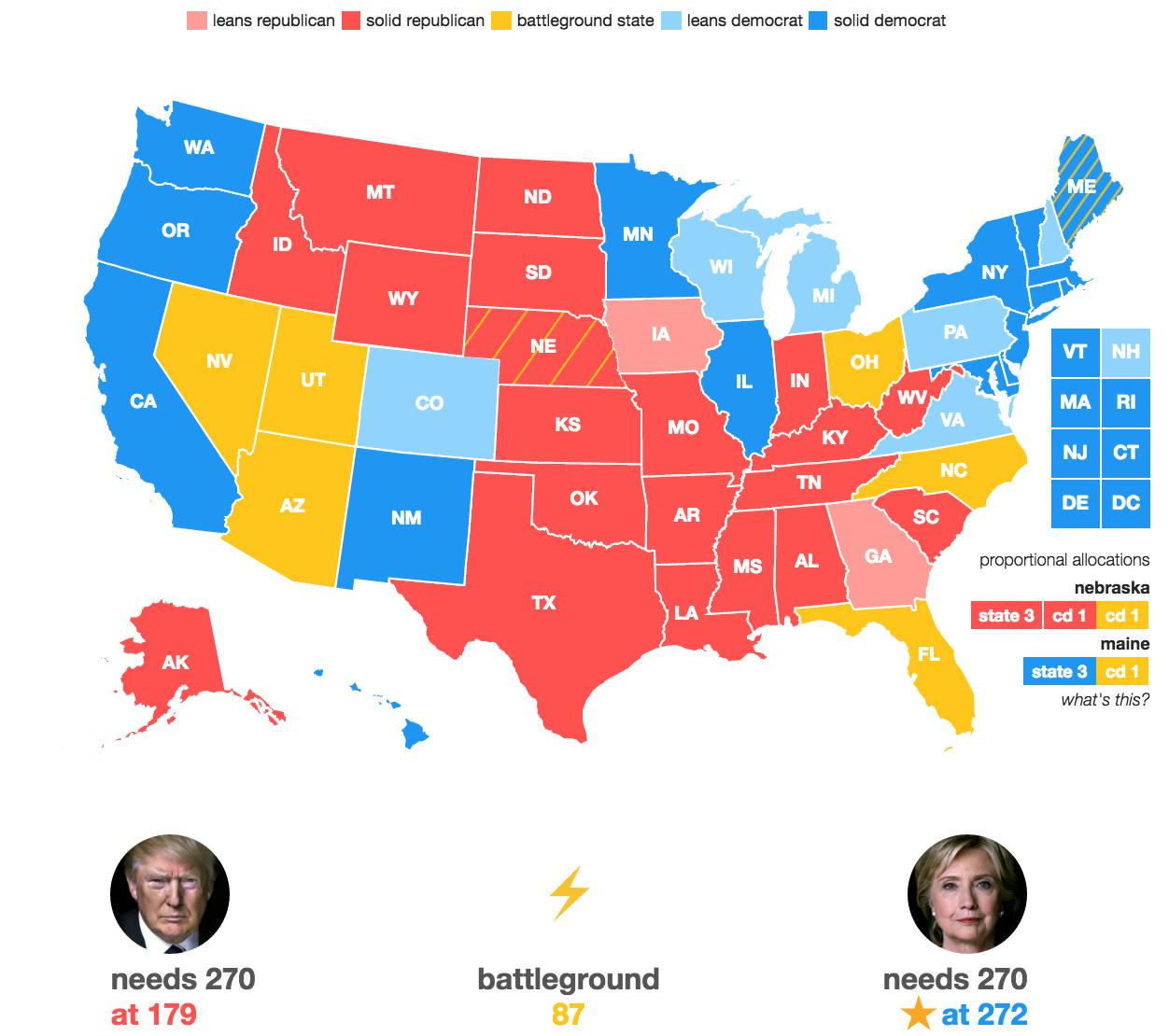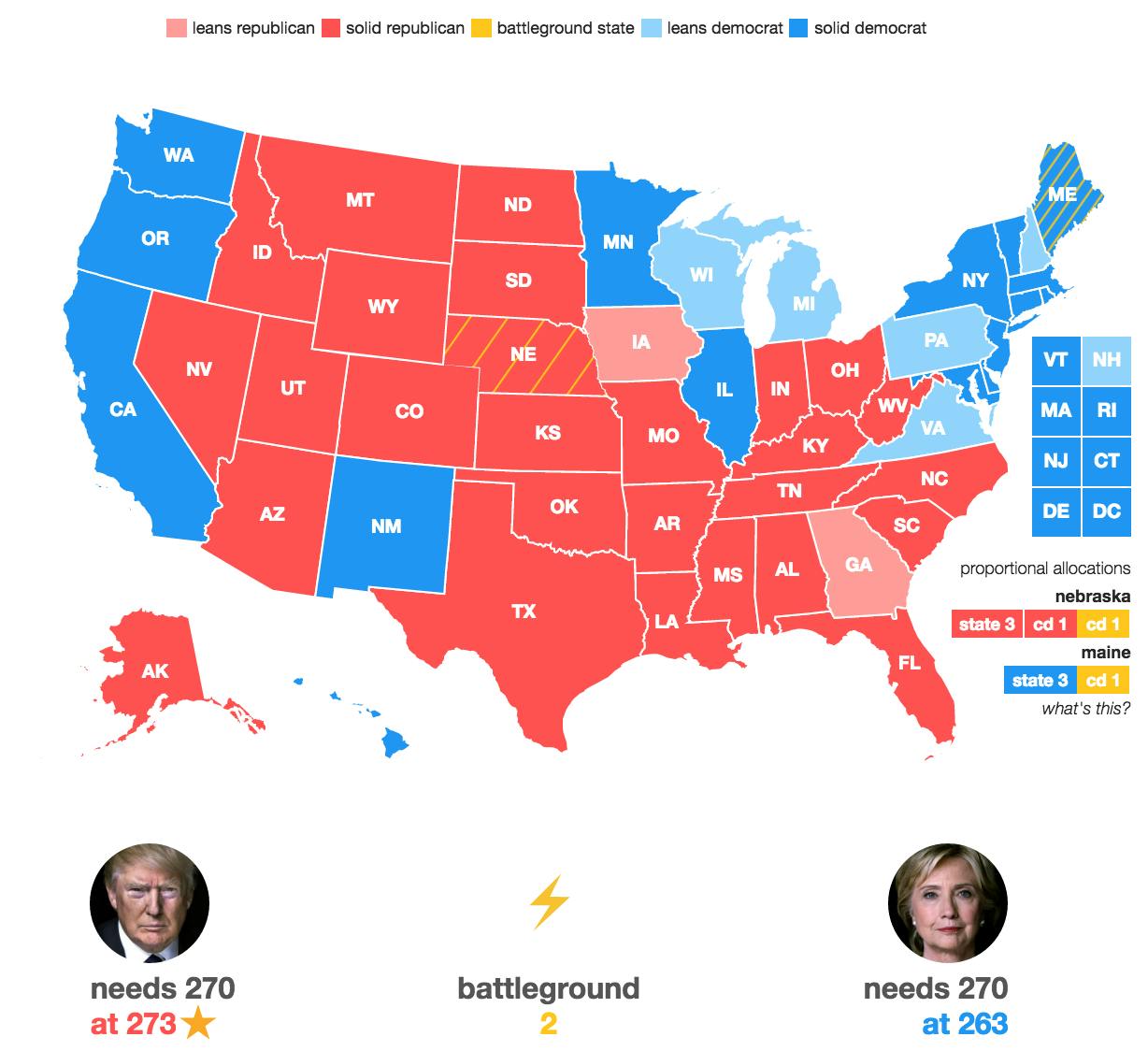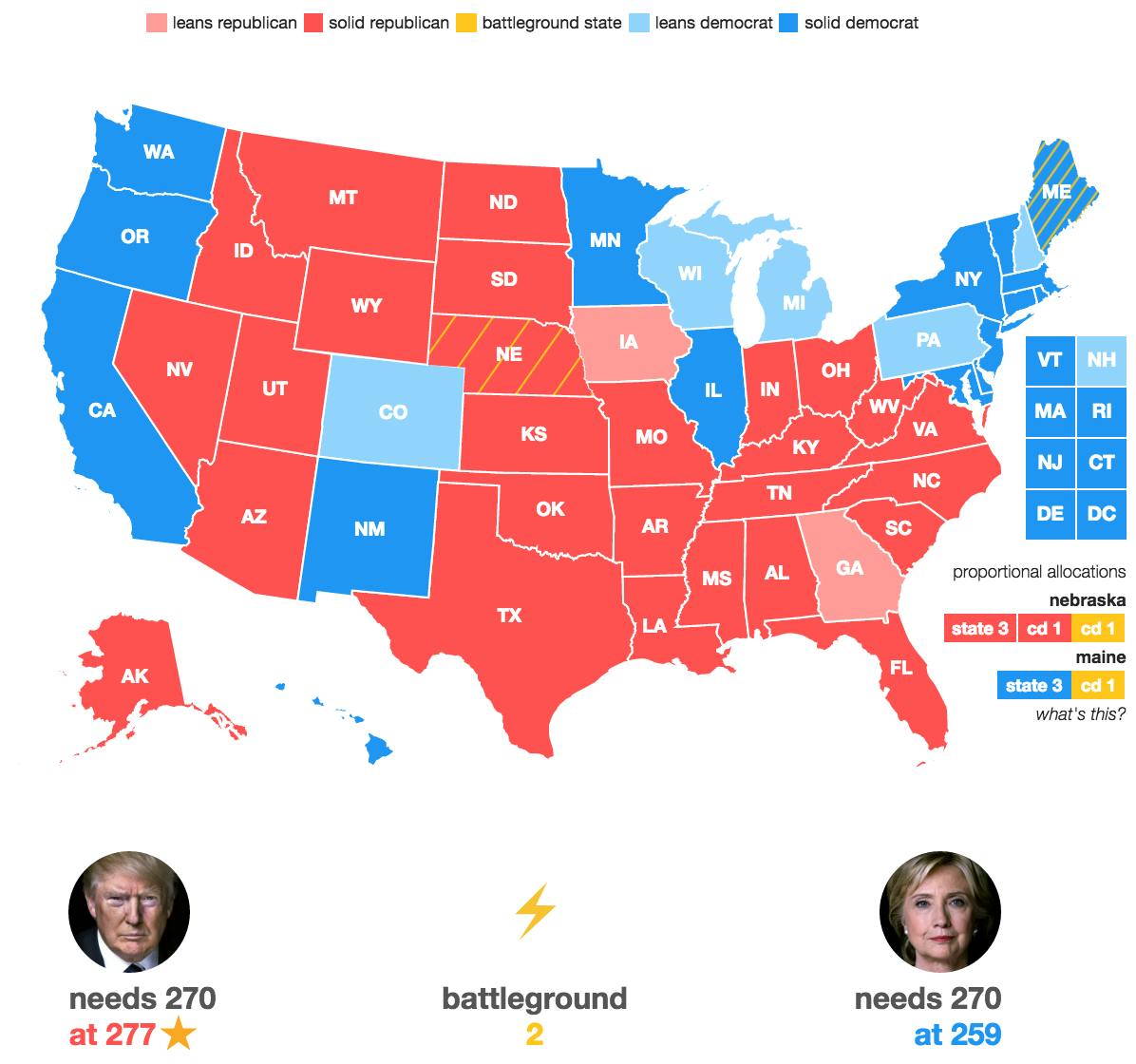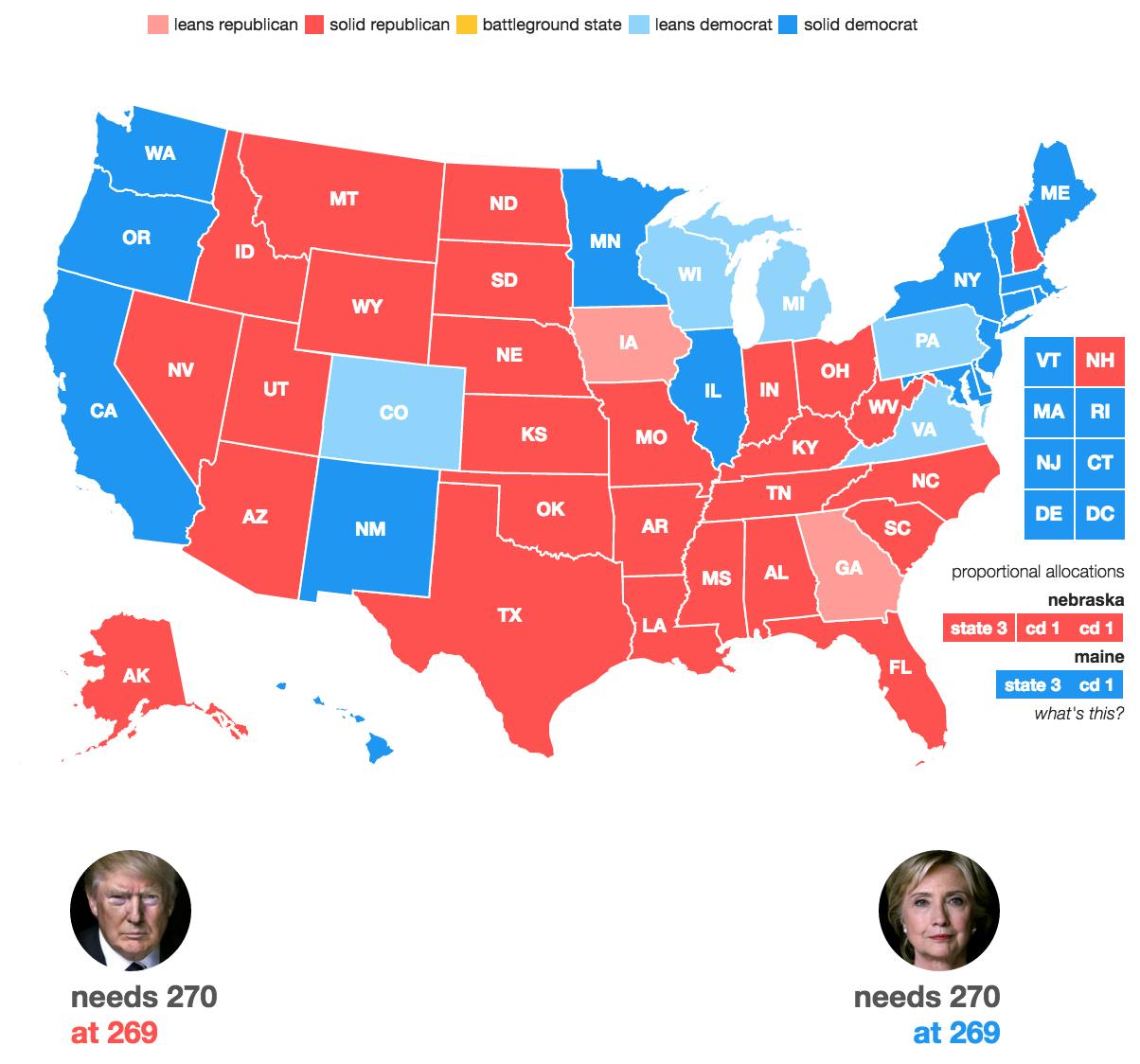In less than a week, America will have its next president—you know, assuming nothing crazy happens.
Two weeks ago, it looked like a lock for Democrat Hillary Clinton. Then the polls started to tighten. Then the FBI broke protocol for some unknown reason and revealed it was looking into new emails that may or may not have to do with Clinton’s infamous private server. Then the polls tightened a bit more, and Republican nominee Donald Trump‘s chances increased.
As of Thursday, Nov. 3—five days to Election Day—Clinton remains the leading favorite among all the election forecasters. In fact, if Clinton simply holds the states where she’s currently ahead, she gets the keys to the White House.
But Trump could still win this.
FiveThirtyEight now gives the former reality TV star more than a 35 percent chance of victory and explains that Trump has a path to the Oval Office if Clinton’s lead narrows further. And remember: This is no ordinary election. The only thing that would be consistent with the rest of what’s happened in 2016 is for the outcome to be a shocker.
That said, there are some simple ways Trump wins. With the help of CNN’s nifty interactive electoral map tool, let’s explore the various routes Trump could take to victory.
Here’s where things stand right now, according to CNN’s count. (Real Clear Politics is more conservative, giving Clinton just 226 solid electoral votes to Trump’s 180 and a lot more tossup states.)
If Clinton holds all the states currently in her column but loses every tossup state on this map, she still wins the election—by two electoral votes.
According to a powerful new open-source prediction model, the state most likely to turn Trump is Colorado—a state where Clinton has led for most of the year but currently has an average lead of just 1.7 points. Granted the prediction model gives Clinton a 90 percent chance of winning the state. But the race is close.
Oh, and Trump would also have to win Nevada, Utah, Arizona, Florida, North Carolina, and Ohio to break the 270 threshold. Here’s what that would look like.
Another, less likely path, is for Trump to win Florida, North Carolina, New Hampshire—considered a tossup state by some models—Nevada, Utah, Arizona, and Virginia. Granted, Clinton has held a steady lead of four to five points in Virginia and prediction models give Clinton a 100 percent chance of winning there. Still, this is 2016 we’re talking about—expect the unexpected.
A final possible option is that Trump wins all the tossup states, including New Hampshire, and takes either Michigan or Wisconsin away from Clinton, which would push him above 270. Neither of these scenarios are particularly likely, according to most prediction models, but there’s also not a ton of polling out of those states and they could shift in an unexpected way.
Want to see the nightmare scenario? Trump wins all the tossup states on CNN’s map and flips New Hampshire. Nebraska and Maine each have a standalone electoral vote that’s in the tossup column; assume those break how the rest of the state is currently leaning. If that happens, we have… a tie! Just think how much fun America would be if that happened.
This outcome is not entirely out of question. NBC News’ latest battleground map shows New Hampshire as a tossup. However, it puts Nevada in Clinton’s corner, and Trump would need to win that, too—and it may already be too late for him there, thanks to early voting in Clinton’s favor.
Of course, every single bit of this is speculation to one degree or another. While more than 22 million people have already voted thanks to early voting, no candidate has won a single state yet (duh). That means we must all remain firmly on the edges of our seats until at least the night of Nov. 8.
Update 11:10am CT, Nov. 3: Clinton’s lead in Colorado has dropped since publication from an average of 2.4 points to just 1.7.






